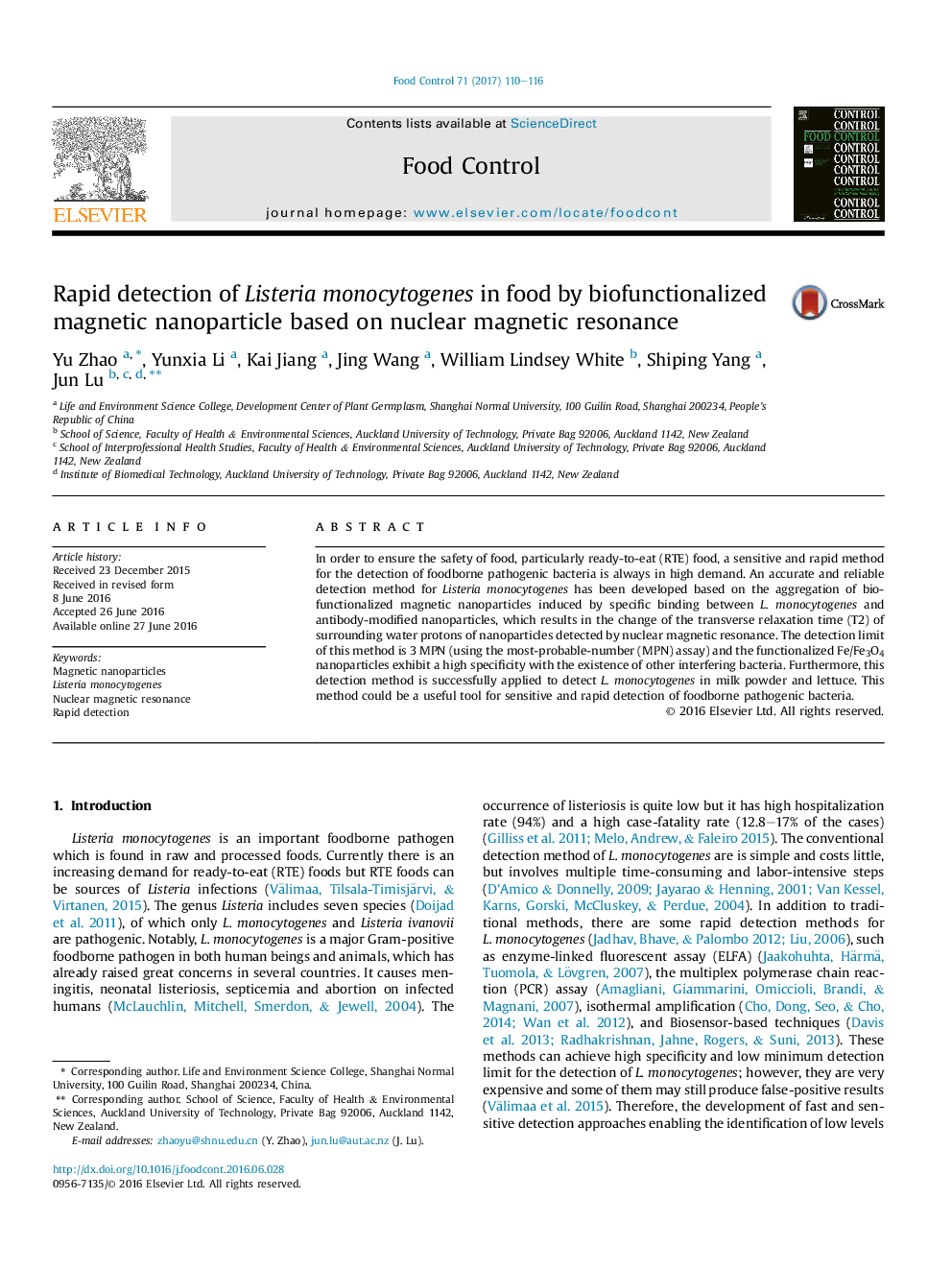| Article ID | Journal | Published Year | Pages | File Type |
|---|---|---|---|---|
| 6389918 | Food Control | 2017 | 7 Pages |
Abstract
In order to ensure the safety of food, particularly ready-to-eat (RTE) food, a sensitive and rapid method for the detection of foodborne pathogenic bacteria is always in high demand. An accurate and reliable detection method for Listeria monocytogenes has been developed based on the aggregation of biofunctionalized magnetic nanoparticles induced by specific binding between L. monocytogenes and antibody-modified nanoparticles, which results in the change of the transverse relaxation time (T2) of surrounding water protons of nanoparticles detected by nuclear magnetic resonance. The detection limit of this method is 3 MPN (using the most-probable-number (MPN) assay) and the functionalized Fe/Fe3O4 nanoparticles exhibit a high specificity with the existence of other interfering bacteria. Furthermore, this detection method is successfully applied to detect L. monocytogenes in milk powder and lettuce. This method could be a useful tool for sensitive and rapid detection of foodborne pathogenic bacteria.
Related Topics
Life Sciences
Agricultural and Biological Sciences
Food Science
Authors
Yu Zhao, Yunxia Li, Kai Jiang, Jing Wang, William Lindsey White, Shiping Yang, Jun Lu,
